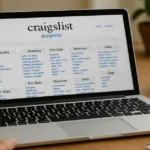Data is the lifeblood of every organization. It’s like puzzle pieces waiting to be put together to reveal a beautiful picture. But here’s the catch: when those pieces are scattered, it’s a chaotic jumble. The solution? Integration! This isn’t just a technical buzzword; it’s the secret sauce that can turn your business from “good” to “great.” In this article, we’ll delve into the art of seamlessly connecting data with the assistance of data observability tools and why it’s the key to unlocking success.
The Symphony of Data: Understanding Integration
Imagine an orchestra tuning their instruments before a grand performance. Each instrument has its role, but the harmonious combination of these diverse sounds creates beautiful music. Similarly, in the world of data, integration is about bringing various data sources and systems together to create a symphony of information.
Integration means ensuring that your customer data can talk to your inventory data, which, in turn, communicates with your sales data. When these elements are seamlessly connected, your organization can make informed decisions, improve customer experiences, and operate more efficiently.
Why Integration Matters
Think of your data as puzzle pieces. You can’t see the complete picture if they don’t fit together. Integrating data is like finding the right slots for those pieces, allowing you to reveal the masterpiece. Here are some reasons why integration matters:
Enhanced Decision-Making
Decision-makers can access a holistic view when data flows freely between departments and systems. This helps in making informed choices that benefit the entire organization.
Improved Customer Experience
Integrated data allows you to understand your customers better. You can provide personalized experiences, solve their issues faster, and enhance customer satisfaction.
Efficiency and Cost Savings
Integration streamlines processes, reduces duplication, and minimizes manual data entry. This not only saves time but also reduces operational costs.
Competitive Advantage
Those who can harness it effectively gain a significant edge in a world where data is king. Integration sets you up for success in a competitive landscape.
The Many Flavors of Integration
Integration is not a one-size-fits-all solution. There are various data observability tools to bring data together, depending on your needs and the complexity of your operations. Here are a few common approaches:
API Integration
Application Programming Interfaces (APIs) are like bridges that allow different software systems to communicate. They enable real-time data sharing between various applications, making it a popular choice for web services and cloud-based solutions.
ETL (Extract, Transform, Load)
ETL tools extract data from multiple sources, transform it into a standard format, and then load it into a data warehouse or database. This approach is common for data analytics and reporting.
Point-to-Point Integration
This is a more manual approach where specific connections are established between two systems. While it’s effective for a limited number of integrations, it can become cumbersome as the number of connections grows.
Middleware Integration
Middleware is an intermediary layer between applications, facilitating communication and data transfer. It’s a flexible and scalable solution for various integration needs.
Custom Integration
For unique and complex integration requirements, custom solutions may be necessary. These are tailor-made to fit your specific business needs.
Challenges of Integration
While the benefits of data integration are immense, it’s not without its challenges. Here are a few common obstacles:
Data Security
When integrating data from various sources, you must ensure the security and privacy of sensitive information. Data breaches can be catastrophic, so robust security measures are essential.
Data Quality
Integrating low-quality data leads to inaccurate insights and decisions. Maintaining data quality and consistency is a continuous effort.
Compatibility Issues
Different systems may use different data formats and structures. Compatibility issues can arise, necessitating data transformation efforts.
Cost and Resources
Integration projects can be resource-intensive. They require not only financial investment but also time and skilled personnel.
Scalability
As your business grows, your integration needs may become more complex. Ensuring that your integration strategy can scale is crucial for long-term success.
Success Stories: The Power of Integration
Many businesses have harnessed the power of data integration to achieve remarkable results. Here are a few success stories demonstrating the transformative potential of seamless data connectivity:
Amazon
This e-commerce giant uses robust data integration to personalize product recommendations, optimize supply chain operations, and improve the customer experience. Their success lies in their ability to harness vast amounts of data from various sources.
Spotify
The music streaming platform leverages data integration to curate personalized playlists and user recommendations. By analyzing listening habits, user-generated playlists, and music libraries, they deliver a unique and engaging experience.
Final Thoughts
The art of seamlessly connecting data is a journey toward unlocking the key to success. Integrating your data sources and systems allows you to make more informed decisions, enhance customer experiences, and operate more efficiently. While challenges may arise, the benefits far outweigh the obstacles. Embrace the power of data integration, and you’ll find your organization orchestrating a beautiful symphony of success in the digital age. So, let the data flow, and your business will surely flourish.











